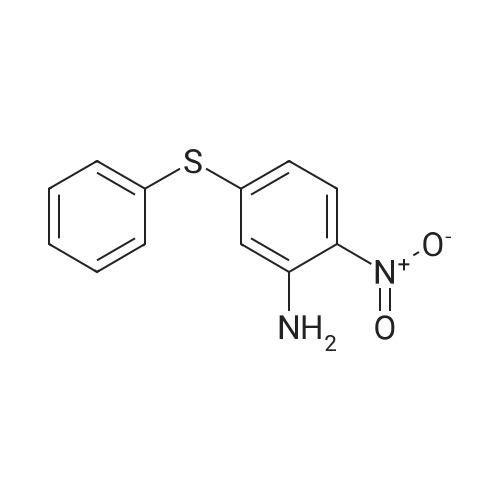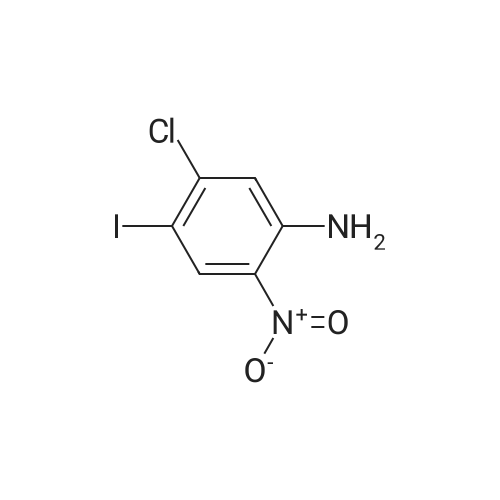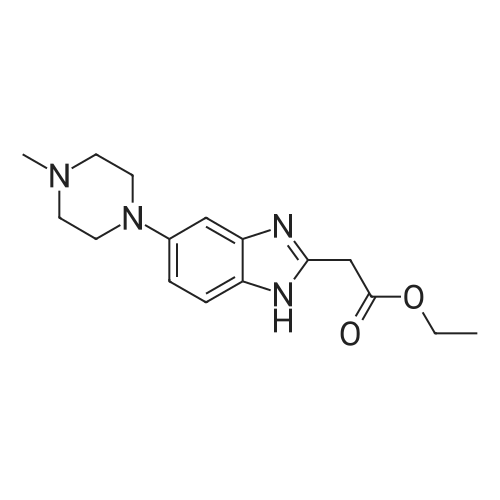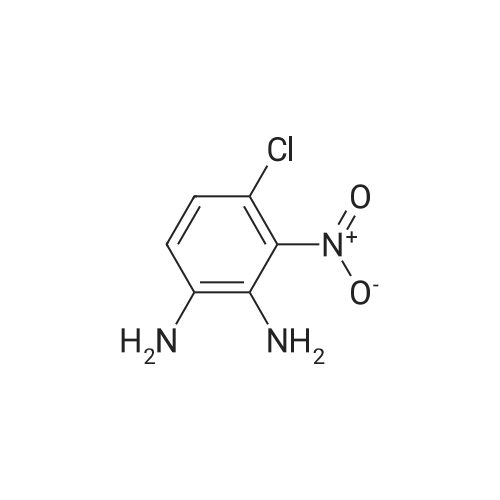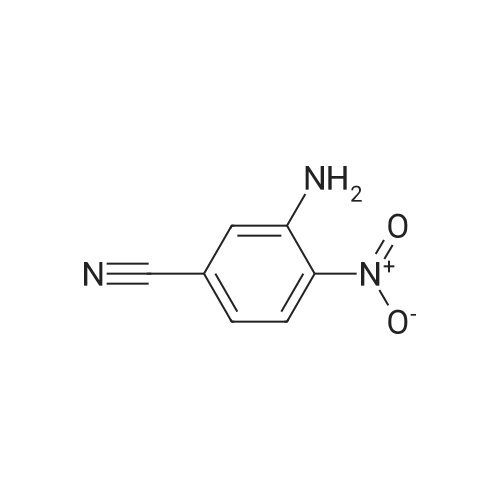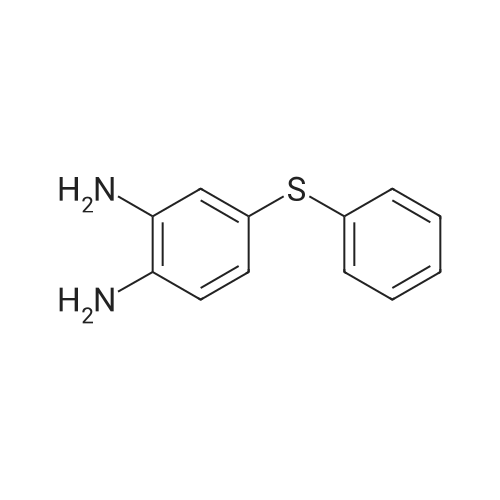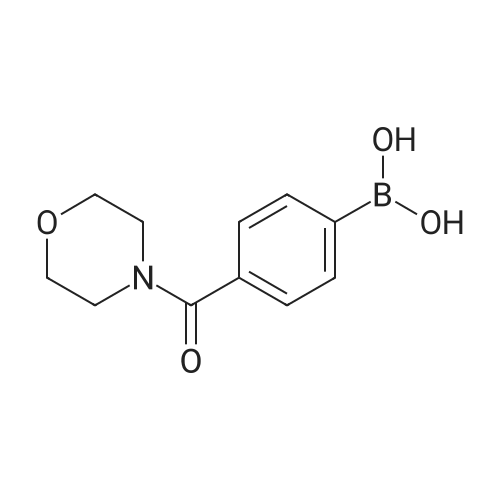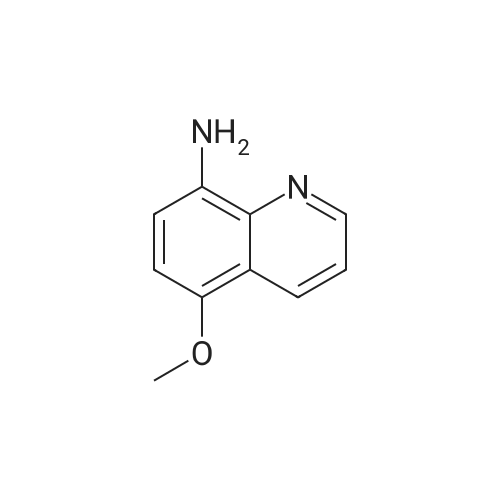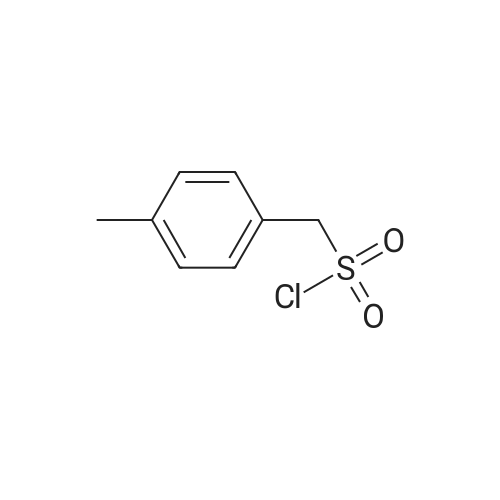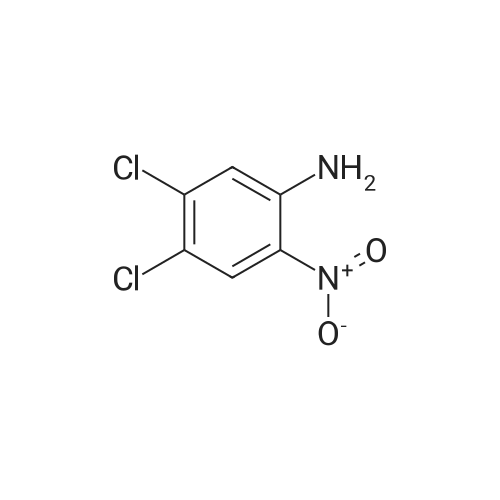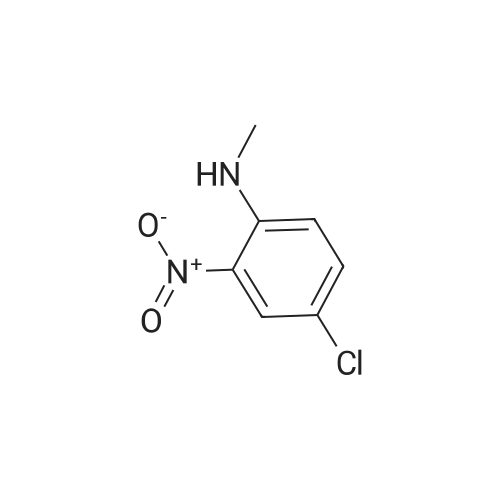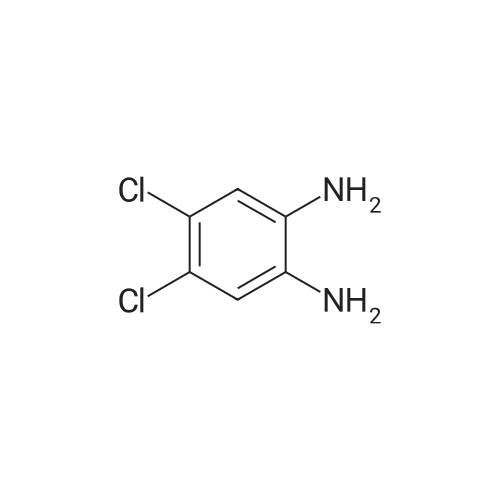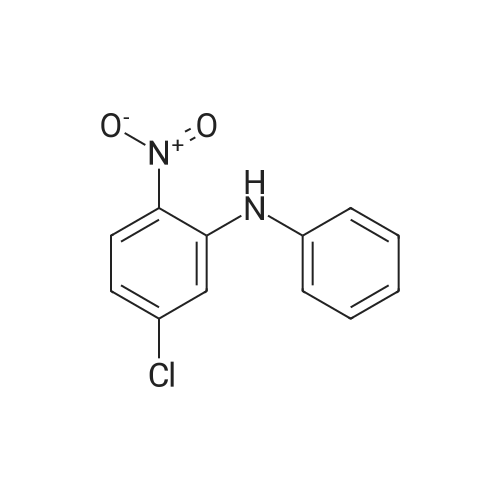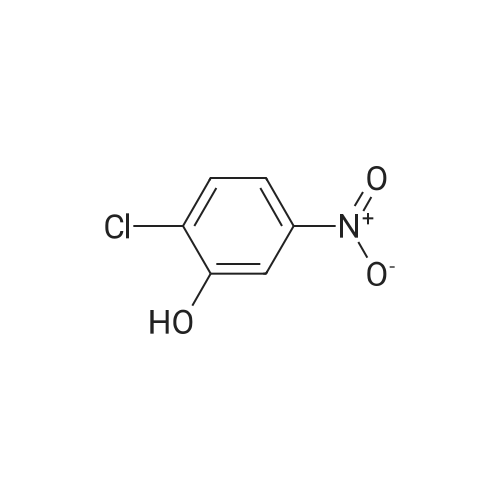|
With Iodine monochloride; In sodium acetate; acetic acid; |
Example A1 5-Chloro-4-iodo-2-nitro-phenylamine Prepared from 5-chloro-2-nitroaniline by iodination with iodine monochloride in HOAc/NaOAc according to the general procedure A (80 C.). Obtained as an orange solid. MS (EI) 298 (M+) and 300 [(M+2)+]; mp 202-203 C. (dec.). |
|
With Iodine monochloride; In sodium acetate; acetic acid; |
Example A1 5-Chloro-4-iodo-2-nitro-phenylamine The title compound was prepared from 5-chloro-2-nitroaniline by iodination with iodine monochloride in HOAc/NaOAc according to the general procedure A (80 C.). Obtained as an orange solid. MS (EI) 298 (M+) and 300 [(M+2)+]; mp 202-203 C. (dec.). |
|
With N-iodo-succinimide; acetic acid; at 50℃; |
Step A 5-chloro-4-iodo-2-nitroaniline. To a solution of 5-chloro-2-nitroaniline (25 g, 145 mmol) in AcOH (250 mL) was added N-iodosuccinimide (32.6 g 145 mmol). The mixture was stirred overnight at 50 C., cooled down to rt and filtered. The solid residue was washed with AcOH, water, saturated aqueous NaHCO3 and water, a nd then dried to afford the desired product as a brown solid, which was used in the next step without further purification. |
|
With N-iodo-succinimide; In acetic acid; at 55℃; for 16.0h; |
A mixture of 5-chloro-2-nitroaniline (20.1 g, 116 tnmol) and N-iodosuccinimide (26.2 g, 116 mmol) in 260 niL of acetic acid was heated at 55 C for 16 h and then cooled in an ice-bath. The resulting yellow solid was collected by filtration and rinsed with acetic acid, water, aqueous NaHCO3 and water, and let stand in air for 2 h to provide 5-chloro-4-iodo-2~mtroaniline 1-5 as a yellow solid. 1H NMR (500 MHz, DMSO-d6): delta 7.23 (s, IH)5 8.32 (S5 IH)5 7.57 (s, 2H). |
|
With N-iodo-succinimide; In acetic acid; at 50℃; |
To a solution of 5-chloro-2-nitroaniline (25 g, 145 mmol) in AcOH (250 mL) was added LambdaModosuccinimide (32.6 g 145 mmol). The mixture was stirred overnight at 500C, cooled to rt and filtered. The solid residue was washed with AcOH, water, saturated aqueous NaHCO3 and water, and then dried to afford the desired product as a brown solid, which was used in the next step without further purification. |
|
With N-chloro-succinimide; In acetic acid; at 50℃; |
To a solution of 5-chloro-2-nitroaniline (25 g, 145 mmol) in AcOH (250 mL) was added JV-iodosuccinimide (32.6 g 145 mmol). The mixture was stirred overnight at 5O0C, cooled to rt and filtered. The solid residue was washed with AcOH, water, saturated aqueous NaHCO3 and water, and then dried to afford the desired product as a brown solid, which was used in the next step without further purification. |
|
|
To a solution of 5-chloro-2-nitroaniline (25 g, 145 mmol) in AcOH (250 mL) was added N-iodosuccinimide (32.6 g 145 mmol). The mixture was stirred overnight at 50 C, cooled down to rt and filtered. The solid residue was washed with AcOH, water, saturated aqueous NaHC03 and water, and then dried to afford the desired product as a brown solid, which was used in the next step without further purification. |
|
With sodium acetate; Iodine monochloride; acetic acid; at 90℃; for 3.0h; |
EXAMPLE 31A; 5-chloro-4-iodo-2-nitroaniline; To a mixture of 5-chloro-2-nitroaniline (8.63 g, 50 mmol) and sodium acetate (4.31 g,52.5 mmol) in acetic acid (45 mL) was added a solution of iodine monochloride (8.52 g, 52.5 mmol) in acetic acid (25 mL) slowly. After the addition, the suspension was stirred at 90C for 3 hours. The mixture was cooled and poured into ice-water. The precipitate was collected by filtration and air-dried to afford the title compound. ]H NMR (300 MHz, dimethylsulfoxide-de) delta ppm 8.36 (s, 1 H) 7.60 (s, 2 H) 7.27 (s, 1 H). MS ESI(-) m/z 296.1 (M-H)". |

 Chemistry
Chemistry
 Pharmaceutical Intermediates
Pharmaceutical Intermediates
 Inhibitors/Agonists
Inhibitors/Agonists
 Material Science
Material Science













 HazMat Fee +
HazMat Fee +

 For Research Only
For Research Only
 120K+ Compounds
120K+ Compounds
 Competitive Price
Competitive Price
 1-2 Day Shipping
1-2 Day Shipping










